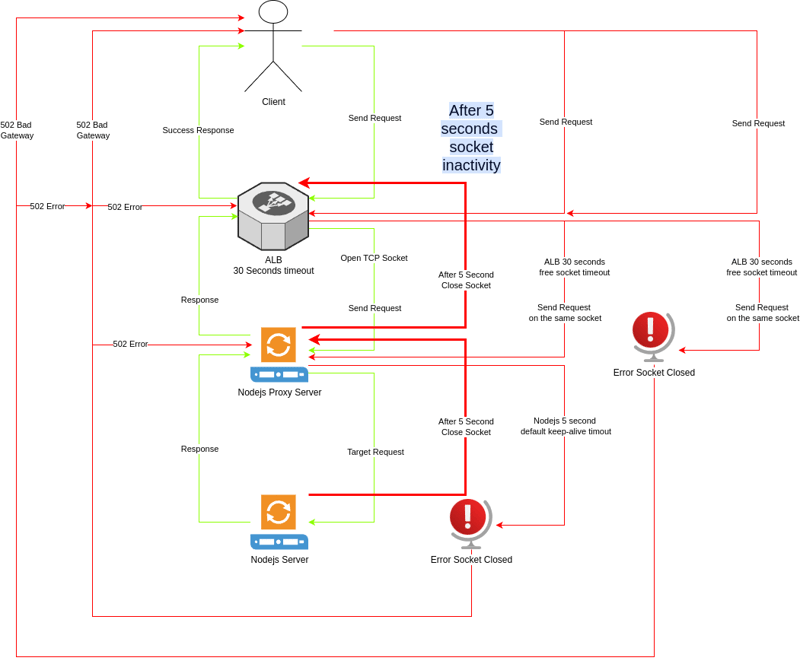Working with microservices architecture, especially involving multiple Node.js servers and AWS Elastic Load Balancer (ELB), encountering 502 errors can be a common issue. These errors often result from timeout issues during server-to-server communication.
A 502 Bad Gateway error usually happens when communication happens between the servers and the load balancer. In my case, AWS ELB configured with a 30-second timeout and Node.js servers handling requests, the default server timeout settings may not align with ELB’s, which leads to unexpected termination of connections.
Adjust Server Timeout Settings:
KeepAliveTimeout: This setting on your Node.js servers should be adjusted to be slightly longer than the ELB timeout. If ELB is set to 30 seconds, consider setting KeepAliveTimeout it to around 35 seconds.
HeadersTimeout: Ensure this is set longer than KeepAliveTimeout. A setting of 40 seconds is recommended to allow enough time for the servers to process and respond to headers without unexpectedly closing the connection.
Apply these timeout settings consistently across all Node.js servers involved in the microservices architecture to prevent unexpected close connections.
Configuring the correct timeout settings in Node.js servers when used with AWS ELB is crucial in mitigating 502 errors.





